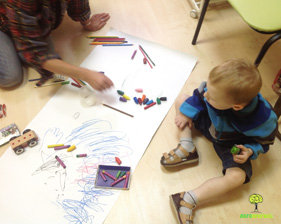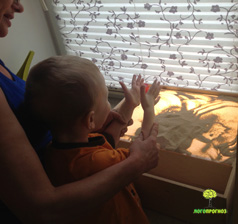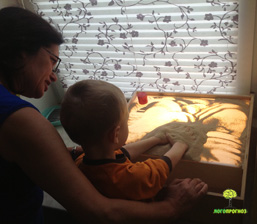What is it?
A system of sessions aimed at developing all facets of the child’s personality using artistic and playful activity.

What problems does this help to solve?
Many parents that have children with special development say that their children are not interested in visual activity, refuse to draw or play with plasticine. This issue can occur due to motor coordination problems that the child is experiencing or because the parents simply couldn’t find the key to help the child enjoy the process of making art.
Art therapy sessions are given to children that have delays in speech development, disorders in development of fine motor skills, hyperactivity, attention deficit. Art therapy sessions are useful for children that have psychological problems, such as fears, difficulties in building relationships with children and adults, aggressiveness.
How are the sessions conducted?
The method of approach is chosen on an individual basis depending on the goals of the course and the age of the child. The art therapist uses methods involving paint, plasticine, paper, drawing on sand on a highlighted table, working with kinetic sand and so on. For children that are beginning to speak stimulation of speech during creative activity is very important.


A subset of art therapy is sand therapy or playing with sand (Sandplay). The equipment allows a child to independently create three-dimensional images that are optimal to the child’s ability to visualize, playing out various scenes in the playground and do a voiceover of them. All children can play with sand, even those that have poorly developed fine motor skills.
What is the novelty of this approach and how is it different?
The sessions are conducted by a professional artist and a pedagogue – a specialist at working with children that have speech and behavioural problems.
At what age can a child do this?
A child can start doing this at the age of 3. Sessions take place 1-2 times a week for 30 minutes.

